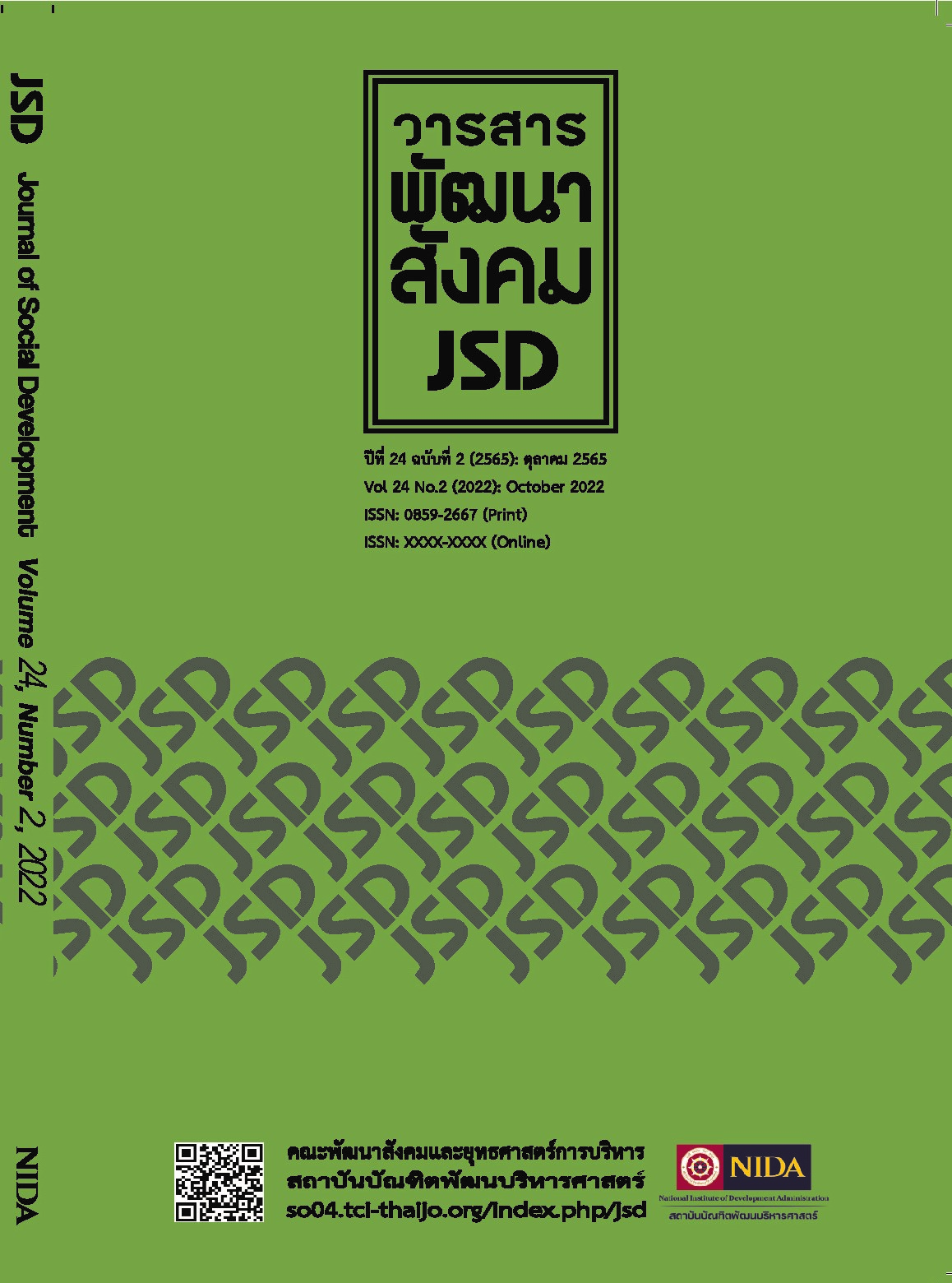The socio-cultural scenario foresight of ASEAN from the perspective of Thailand's interests
Main Article Content
Abstract
With the change of the world, ASEAN is still facing challenges from existing and new threats, especially changes in COVID-19 and global geopolitical changes. Therefore, predicting the future development of ASEAN, especially in the social and cultural aspects that directly affect people's lifestyle is significant.
The research has two objectives: 1) to identify and explore the factors affecting ASEAN's development from the social and cultural aspects and 2) to analyze the future development of ASEAN from the social and cultural aspects. This study uses qualitative research methods to collect data by in-depth interviews with 49 ASEAN related experts.
The results show that:
1) Factors affecting ASEAN's development at social and cultural levels mainly include: (1) trend factors which refer to factors that tend to develop in any directions and have high impact, such as ASEAN's poverty and inequality, public health management, entering an aging society, age gap, transportation network, environmental problems, disasters, and etc. (2) weak signals are factors that depend more or less on unpredictable constraints, such as ASEAN’s identity, ASEAN’s education system, labor mobility, human rights, trust, and the development gap between member countries; (3) the decisive factor is a complex factor, which, if it occurs, will certainly change the predicted future prospects in someway, such as the fourth industrial revolution, political instability, leadership change, nationalism, and etc.
2) ASEAN's future prospects at social and cultural levels include three scenarios. The first scenario which is the best scenario: ASEAN will work together to commit to sustainable development and gradually become a supranational organization with a common market economy such as the EU. The second scenario which is a possible scenario: ASEAN is sustainable in terms of national interests and internal environment, or it is sustainable under the condition that it is united for economic goals. ASEAN will carry out joint activities of "seeking common ground while reserving differences". The third scenario which is the worst scenario: ASEAN does not consider sustainability and has no cooperation. Each member country distrusts the other and is suspicious. It was used as a target for intervention by external forces, leading to the withdrawal and eventual collapse of ASEAN Member States.
Article Details

This work is licensed under a Creative Commons Attribution-NonCommercial-NoDerivatives 4.0 International License.
References
Nontapattamadul, K. (2012). The Openness of ASEAN 2015 in the Dimension of Social Development and Human Security [in Thai]. Rompruek Journal, 30(3), 71-86.
Kosalyawat, S. (2014). Problems and Obstacles of ASEAN Community: Foundations of Education’s Perspective [in Thai]. Rompruek Journal, 32(3), 1-22
Kraiwattanapong, V. (2019). ASEAN under the Social and Cultural Pillars [in Thai]. Retrieved from https://shorturl.asia/BiZmC
Socatiyanurak, M. (n.d.). ASEAN 2025: heading together ASEAN Community Vision 2025 [in Thai]. Retrieved from http://123.242.172.6/hr/document/p_aec_2025.pdf


